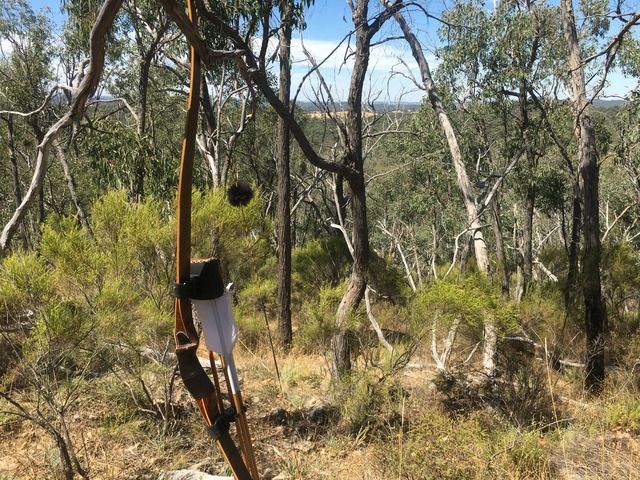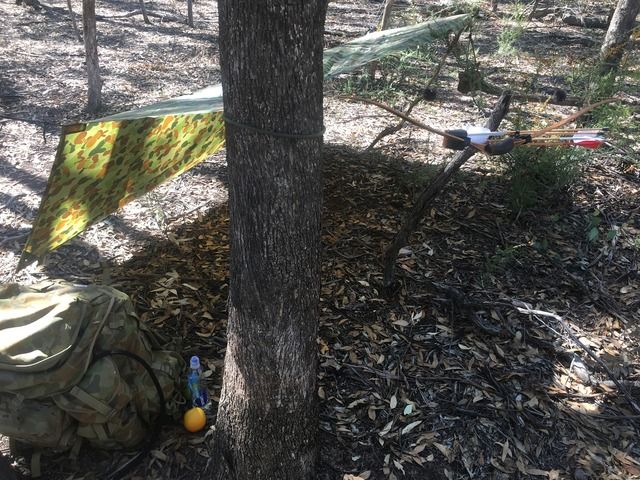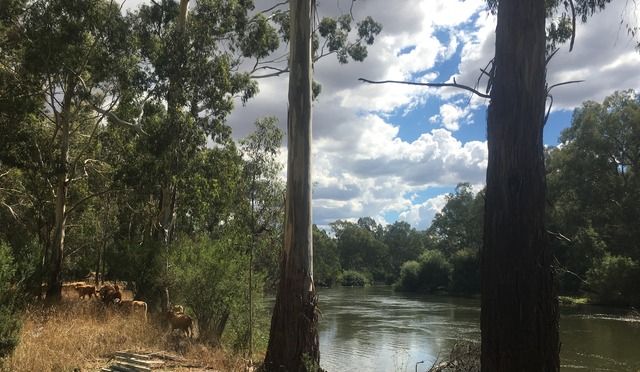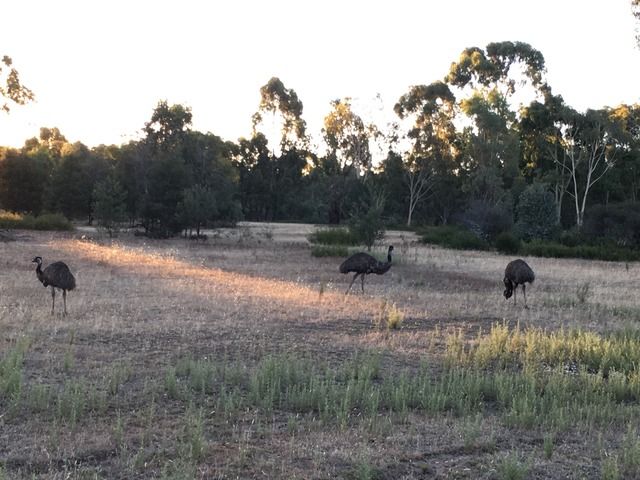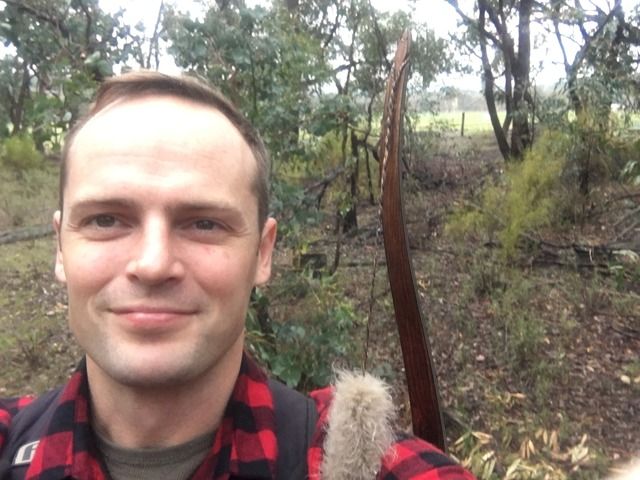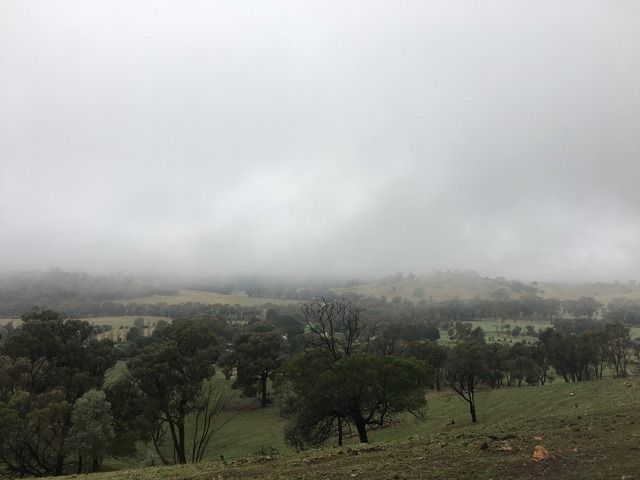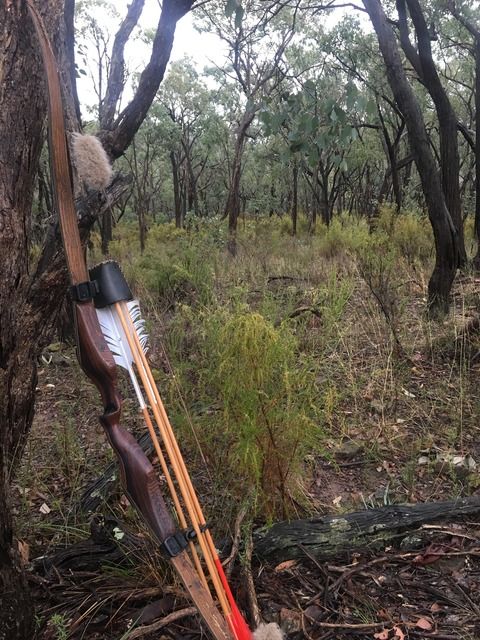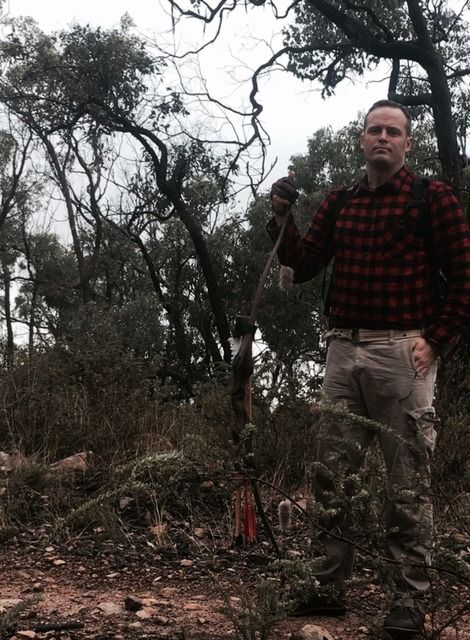Forum Replies Created
-
AuthorPosts
-
in reply to: What ya got goin'? 2 #134856
Hey all, down to the local range the other day with the trusty old Samick Sage (Elkheart Too is currently with Mr Coffee of Javaman Archery getting refinished after some water damage). Was introducing a new person to the joys of archery and she had an absolute blast, although she wasn’t excited by the three ticks I found on my legs driving home. That time of year around here!
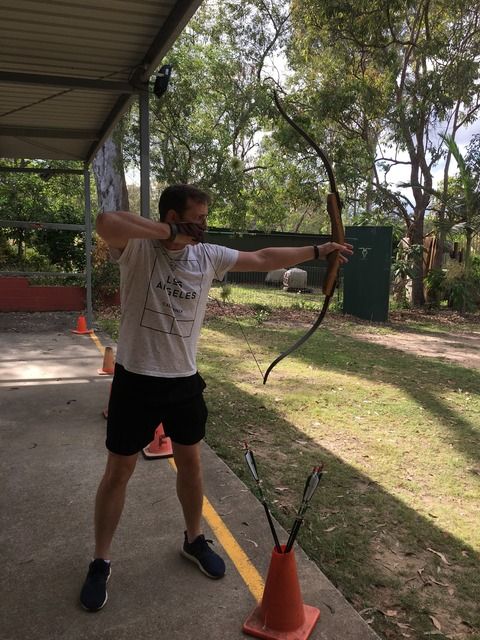
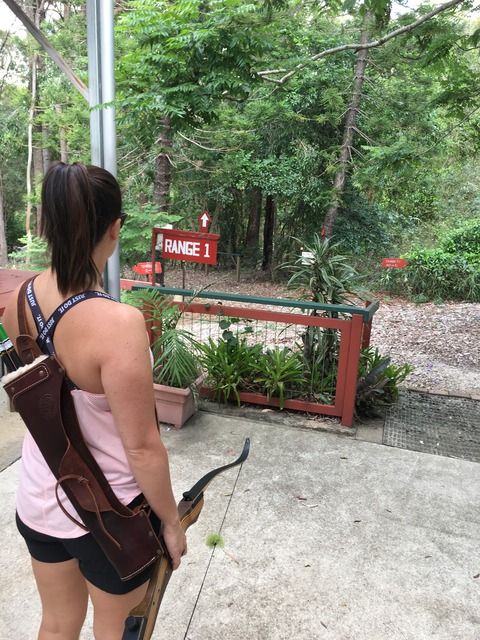 in reply to: Books for Traditional Bowhunters #134841
in reply to: Books for Traditional Bowhunters #134841Hey all, so I thought I’d give you all some little excerpts from Corbetts writing, mostly because I think it is so great. So I just finished reading another of his, ‘The Man-eating Leopard of Rudraprayag’. Shorter book than his books about tigers but wonderful all the same.
I wanted to highlight three components to his writing. First, his humor. He always has little humorous injections which perhaps stand out more because so much of his writing is tense and serious. Second his love and knowledge of the world he lived and hunted in. He was not only so knowledgable and experienced but also endlessly curious. Finally his humanity. Sometimes when I’m reading his writing I have to remind myself he was a British officer in colonial India at the start of twentieth century. His sense of humanity and decency was far beyond the expectations of his time (compare that to Patterson ‘Man-eaters of Tsavo’, a British officer in colonial Africa whose careless and selfish treatment of his Indian workers was nothing short of villainous).
So, if you’ve got a cup of coffee, some moments to spare and a little patience join me on this little dip into Corbetts writing.
1. Humor
The scene: Corbett has been tracking the man eating leopard from its last kill 8 miles away and has come across an old pack man by the Ganges river and has stopped for a cigarette.
“While we were talking, an animal appeared on the crest of the hill on the far side of the Ganges. From its colour, I at first thought it was a Himalayan bear, but when it started to come down the hill towards the river, I saw it was a big wild boar. The pig was followed by a pack of village pye dogs, who in turn were followed by a rabble of boys and men, all armed with sticks of varying size. Last came a man carrying a gun. As this man crested the hill he raised his piece and we saw a puff of smoke, and a little later heard the dull report of a muzzle-loading gun. The only living things within range of the gun were the boys and men, but as none of them dropped out of the race, the sportsman appeared to have missed.”
Corbett has a dry, understated wit that always puts a smile on my face.
2. Love and knowledge of wilderness
The scene: Corbett is again hot on the trail of the leopard and has bought a local goat to use as bait. The villager he bought it off assured him it was a good caller and would bleat once seperated from its herd. Alas the goat happily nibbles some grass then settles down for a nap. Corbett decides he will attempt some cat calls to try and bring the territorial male in himself, but gives us a little aside from some time in the past to explain how useful knowledge of the jungle can be:
“If I were asked what had contributed most to my pleasure during all the years that I have spent in Indian jungles, I would unhesitatingly say that I had derived most pleasure from a knowledge of the language, and the habits, of the jungle-folk. There is no universal language in the jungles; each species has its own language, and though the vocabulary of some is limited, as in the case of porcupines and vultures, the language of each species is understood by all the jungle-folk. The vocal chords of human beings are more adaptable than the vocal chords of any of the jungle-folk, with the one exception of the crested wire-tailed drongo, and for this reason it is possible for human beings to hold commune with quite a big range of birds and animals. The ability to speak the language of the jungle-folk, apart from adding hundredfold to one’s pleasure in the jungle, can, if so desired, be put to great use. One example will suffice…
He then introduces a hunting excursion he had taken in the Kashmir region of the Himalayas (now one of the most militarily contested regions on Earth) and is caught out in a tremendous storm from which he shelters under a tree.
The moment the hail stopped the sun came out, and from the shelter of the tree I stepped into fairyland, for the hail that carpeted the ground gave off a million points of light to which every glistening leaf and blade of grass added its quota. Continuing up for another two or three thousand feet, I came on an outcrop of rock, at the foot of which was a bed of blue mountain poppies. The stalks of many of these, the most beautiful of all wild flowers in the Himalayas, were broken, even so these sky-blue flowers standing in a bed of spotless white were a never-to-be-forgotten sight.
The rocks were too slippery to climb, and there appeared to be no object in going to the top of the hill, so keeping to the contours I went to the left, and after half a mile through a forest of giant fir trees I came to a grassy slope which, starting from the top of the hill, extended several thousand feet down into the forest. As I came through the trees towards this grassy slope I saw the far side of it an animal standing on a little knoll, with its tail towards me. From illustrations seen in game books I knew the animal was a red Kashmir deer, and when it raised its head, I saw it was a hind.
On my side of the grassy slope, and about thirty yards from the edge of the forest, there was big isolated rock some four feet high; the distance between this rock and knoll was about forty yards. Moving only when the deer was cropping the grass, and remaining still each time she raised her head, I crept up to the shelter of the rock. The hind was quite obviously a sentinel, and from the way she looked to her right each time she raised her head, I knew she had companions, and the exact direction in which these companions were. To approach any nearer over the grass without being seen was not possible. To re-enter the forest and work down from above would not have been difficult but would have defeated my purpose, for the wind was blowing down the hill. There remained the alternative of re-entering the forest and skirting the lower end of the grassy slope, but this would take time and entail a stiff climb. I therefore finally decided to remain where I was and see if these deer – which I was seeing for the first time – would react in the same way as cheetal (chital) and sambhar (sambar) do to the call of a leopard, of which I knew there was at least one on the mountain, for I had seen its scratch marks earlier in the day. With only one eye showing, I waited until the hind was cropping grass, and then gave the call of the leopard.
At the first sound of my voice the hind swung round and, facing me, started to strike the ground with her forefeet. This was a warning to her companions to be on the alert, but those companions whom I wanted to see would not be moving until the hind called, and this she would not do until she saw the leopard. I was wearing a brown tweed coat, and projecting a few inches of my left shoulder beyond the rock I moved it up and down. The movement was immediately detected by the hind, who, taking a few quick steps forward started to call; the danger she had warned her companions of was in sight and it was now safe for them to join her. The first to come was a yearling, which, stepping daintily over the hail-covered ground, ranged itself alongside the hind; the yearling was followed by three stags, which in turn were followed by an old hind. The entire herd, numbering sic in all, were now in full view at a range of thirty-five yards. The hind was still calling, while the others, with ears alternately held rigid or feeling forward and backward for sound and wind direction, were standing perfectly still and gazing into the forest behind me. My seat on the melting hail was uncomfortable and wet, and to remain inactive longer would possibly result in a cold. I had seen a representative herd of the much famed Kashmir deer, and I had heard a hind call, but there was one thing more that I wanted. That was, to hear a stag call; so I again projected a few inches of my shoulder beyond the rock, and had the satisfaction of hearing the stags, the hinds and the yearling calling in different pitched keys.
My pass permitted me to shoot one stag, and for all I knew one of the stags might have carried a record head, but though I had set out that morning to look for a stag, and procure meat for the camp, I now realized that I was in no urgent need of a trophy. In any case the stags meat would probably be tough so, instead of using the rifle, I stood up and six of the most surprised deer in Kashmir vanished out of sight, and a moment later I heard them crashing through the undergrowth on the far side of the knoll.”
3. Humanity
The scene: This is in the epilogue and while this leopard hunting adventure happened in the 1920’s this particular anectode comes from 1942. Corbett is visiting some wounded Indian soldiers and is doing the rounds to say hello and talk to them. He meets one young man, whos heroic actions in the war had left him crippled for life but who happens to come from the district where this man eater had prowled for 8 long years killing over a hundred people. The young chap was a young boy when Corbett shot the leopard and missed the chance to meet him and see the leopards corpse at the time. He is so pleased to meet Corbett and despite his crippling injuries attempts to adopt the old Indian posture of respect and bow down to touch his head to Corbetts feet and professes how proud he’ll be to tell his father that they spoke. Corbett writes:
“A cripple, on the threshold of manhood, returning from the wars with a broken body, with no thought of telling of brave deeds done, but only eager to tell his father that with his own eyes he had seen a man who years ago he had not had the opportunity of seeing, a man whose only claim to remembrance was that he had fired one accurate shot.
A typical son of Garhwal, of that simple and hardy hill-folk; and of that greater India, whose sons only those few who live among them are privileged to know. It is these big-hearted sons of the soil, no matter what their caste or creed, who will one day weld the contending factions into a composite whole, and make of India a great nation.”
I just received a new copy of a collection of his works, ‘Man-eaters of Kumaon”, “The Temple Tiger” and “The Man-eating Leopard of Rudraprayag”. I can’t recommend him enough and what a perfect time to get stuck into a new book as Christmas approaches.
Jim
in reply to: Old photos #134840Great photo Charles! And Robin, it was very cool to read the recent article about Mr Negley after getting the memory jogger about him on this thread. He really sounded like a remarkable fellow that very much followed his own path.
in reply to: PVC Kids Bow Build-Along #133463Steve, amazing stuff. Thanks so much for sharing it with everyone!
Jim
Ralph, I’m late to this thread and hope that your medical condition has improved!
I think every opportunity should be made to highlight those things that draw us together. The love of the wild places, the trees, the wind, grass and rock underfoot, the bending bow and flying arrow. Those are so much bigger and and more meaningful than the trivialities that separate us.
I agree wholeheartedly, in a passion as small as ours, which for beginners can be so daunting, when they leave the familiar comforts of couch and screen to step back into the unknown, romantic adventure of bow and arrow we need to include, invite, welcome and encourage. Bend the bow, let the arrow fly. See if your heart doesn’t fly with it. That’s what really matters, in my small opinion.
Jim
in reply to: Return to traditional archery and bow hunting. #133376Hey Jim,
Welcome to the forum and welcome back to the adventure! I can’t wait to hear more about your Alaskan adventures, if ever you need help uploading photos send me a private message and I’m sure I can help you sort it out. Us Jims have got to stick together.
Jim
in reply to: Old photos #133375David, I noticed that too. That’s Art Young. Arts buddy Saxton Pope wrote that the split finger was the right way to draw a bow.
But Pope also wrote that Art was the best shot amongst them, particularly at long range where he would ‘take particularly careful aim’. Perhaps his three fingers under draw helped?
in reply to: Old photos #133367Alright, here’s my personal Archery hero, Dr Saxton Pope (PS, does it seem trad archery seems to attract medical doctors? Dr Pope, Dr Ashby, Dr Thomas etc?):
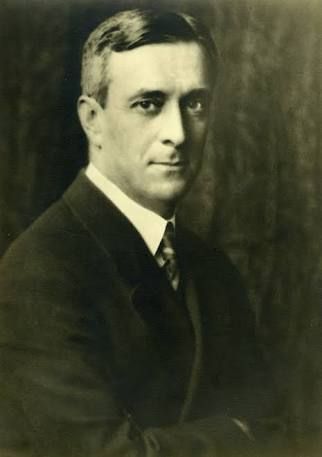
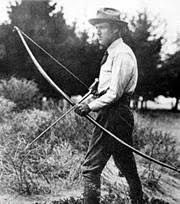

Pope and Young:
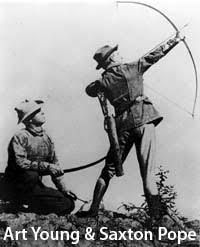
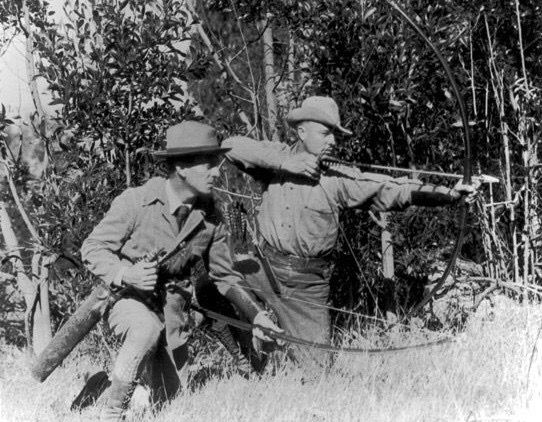
Pope, Young and Compton:
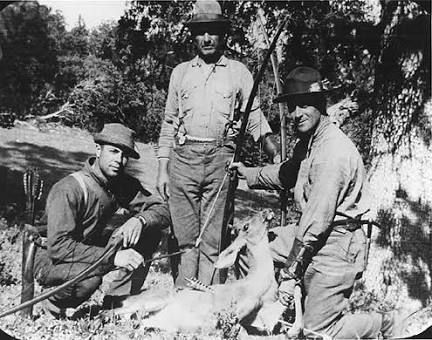 in reply to: Old photos #133365
in reply to: Old photos #133365Sorry Robin, I was playing the game (silently) but didn’t have a clue who he was! Good on you Dave, the old persistence method pays off 🙂
The name Negley is familiar. Is he the fella that hunted a polar bear with his recurve?
I found this one, titled University of Chicago Archery Team, 1935:
 in reply to: Longbow Problem #133286
in reply to: Longbow Problem #133286My immediate thought is either the bow got shorter or the string got longer. Maybe it’s the string and not the bow. What kind of string do you have on it?
in reply to: PVC Kids Bow Build-Along #133188Steve, it looks great and I can’t wait to see the how to. I bet lots of folks will be interested.
Jim
in reply to: What ya got goin'? 2 #133098Ralph, I suspect in Texas, like downunder, pretty much everyone is having a siesta just after lunch. I did get woken up by some of the biggest trophy buck blow flies I’ve ever seen though. They were thick as mosquitos in some of Victoria’s forests, and would draw blood when they bite you. First time I went out I didn’t have insect repellent. Was a very long couple of days!
in reply to: What ya got goin'? 2 #133089Not a single thing David 🙂
I’d never been there before and had no one around to give me any guidance. I’d identified that there was a very healthy fox population in the district but I knew nothing of the deer there abouts. So I basically ventured out with the goal of shooting some foxes and keeping my eyes open for deer sign.
I got a couple of shots on a couple of foxes but the best I got was a little ruffled fur. Meanwhile I did see a lot of deer sign (particularly around water holes), but never any deer. I also saw a lot of hunters sign. Lots of empty shell casings etc. Australia has much less restrictive hunting laws in general than the US, so there is no particular season for deer, no particular season for bows or rifles. So in short I think the deer are under constant rifle hunting pressure and consequently quite sneaky. They certainly out witted me. I would often revisit water holes at first light and find fresh sign, suggesting they’re out and about at night.
But I did see lots of native fauna, cover a lot of ground and had several enchanting naps in the afternoon sun 🙂
jim
in reply to: What ya got goin'? 2 #133070Dave, good luck with your hook and line today!
I found some photos of a little excursion from autumn 2017 that I thought I might share. I was down in Victoria (south east corner of Australia) for a little while and got my state license while there (one of only two states down under with public land hunting).
Central Victoria is a truly beautiful part of the world, wet with snow fed rivers, the rolling foothills of Australia’s alpine region, with the ghostly, twisted, eucalypt forests described by English explorers. For particular interest to hunters, our English forbears who settled there were hunting enthusiasts themselves and intentionally imported many game species from Europe. The list includes rabbits and hares, the cunning Mr red fox, Sambar Deer (Cervus unicolor), Hog Deer (Axis porcinus), Red Deer (Cervus elaphus), Fallow Deer (Dama dama), Chital Deer (Axis axis) and Rusa Deer (Cervus timorensis). All packed into Australia’s smallest mainland state (about 90,000 sq miles). Neat.
Jim
Troy, I’ll second the comments about a coach. If you’ve really tried and have found yourself not improving further, it’s a great idea to have someone who knows the game have a look at you. There is no shame in it, rather it demonstrates a thirst for improvement that we should all seek to emulate.
If you happen to be somewhere where you can’t find/afford a coach, I can strongly recommend the videos by Arne Moe on YouTube. They are really well done and you’ll try some different things. I’m sure some of them will click.
Good on you for working hard and asking for help when you need it! Good luck.
Jim
-
AuthorPosts



